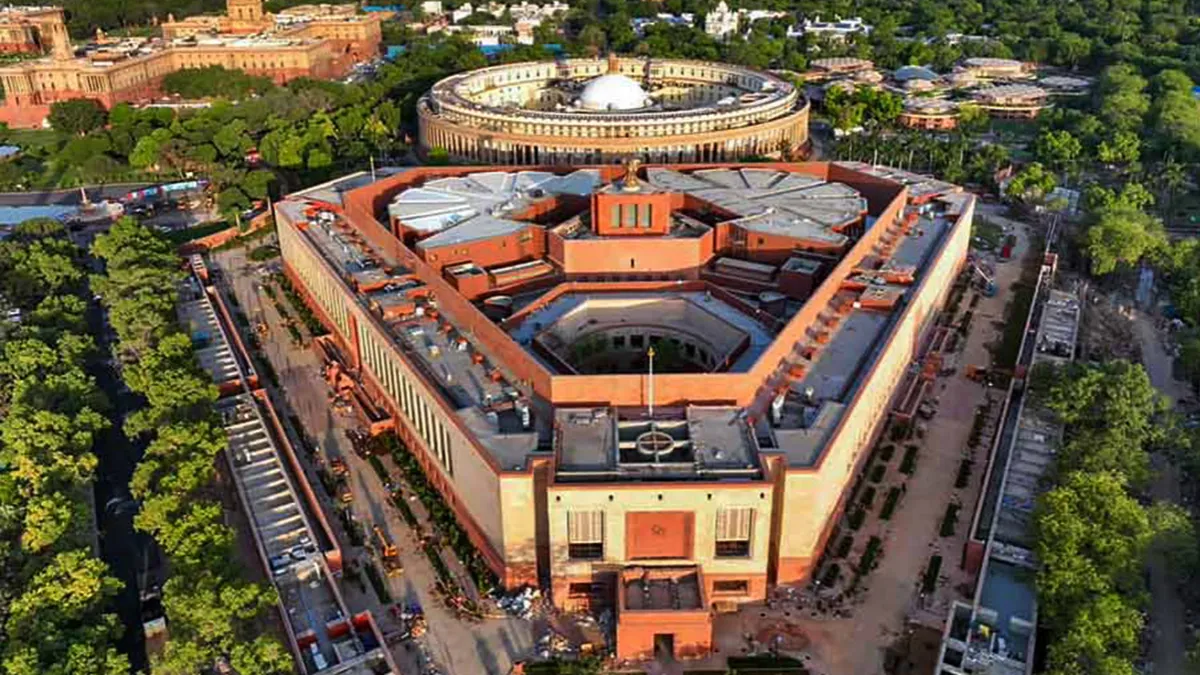The new Parliament building is a representation of India's cultural and civilisational history
19 Sep 2023
News
The new Parliament's grand entry gates provide an extensive representation of India's cultural and civilizational past. The three national emblems of India—the lotus, the peacock, and the banyan tree—are the themes of the interior of the "temple of democracy." Indian mythology and culture has been represented at the entryway of the new Parliament.
Gaja Dwar, Ashwa Dwar, Garuda Dwar, Makar Dwar, Shardula Dwar, and Hamsa Dwar are the six gates of the new parliament building. These are all named after both actual and imaginary creatures. They act as welcoming sentinels, making visitors feel as though they are entering a significant structure.
Gaja Dwar: The Gaja Dwar which is located on the north side of the new Parliament building, is named after the elephant. Elephant symbolises ts intellect, memory, wealth and wisdom. In Indian mythology, elephants are also associated with prosperity and happiness.
Hamsa Dwar: Hamsa Dwar is named after Hamsa or Swan, often associated with goddess Saraswati, the deity of knowledge represents self-realization and wisdom. The presence of the Swan at the entrance is a symbol of knowledge.
Shardula Dwar: A mythical animal having the body of a lion and the head of a horse, elephant, or parrot is called Shardula. The government claims that the animal guarding the entrance represents the might of the nation's citizens.
Garuda Dwar: Garuda, the king of birds and also a mount of Lord Vishnu, is located at the eastern entrance to the new Parliament building. Garuda represents power and dharma. It symbolises that the Parliament is the power of the people and those inside will follow their ‘Dharma’ (duty).
Makara Dwar: The legendary sea creature often depicted as half mammal and half fish sits at the Makara Dwar. The gate faces gate 12 of the old Parliament building. In Hindu and Buddhist monuments, the creature is frequently shown as a guardian.
Ashwa Dwar: Ashwa symbolises power, strength and courage. It is the sanskrit word for a horse found in the ancient Rigveda and in Indian culture.
The structure is an amalgam of modern and technologically advanced India when you enter it. An innovative security system that incorporates face recognition software, extensive CCTV coverage, and stringent visitor screening procedures has been installed to fortify the property.
Additionally, retina scans and biometrics will be performed at the door, making the security system in place a top-notch one. The digital interface made available to each MP is one of the standout characteristics. The built-in laptops let MPs to use a touch interface to register their presence, issue requests to speak, and access papers and reports relating to their legislative work once they are seated in either the Lok Sabha or the Rajya Sabha. This function is an effort to make Parliament a greener setting and less reliant on paper.
A dynamic sound system that was created especially for the new parliament building's huge circular form is another impressive feature. This cutting-edge technique eliminates echo, improving the acoustics and guaranteeing that every word said in discussions reverberates clearly in every part of the room. This is an example of how technology can be easily implemented into design to boost efficiency and communication. To further increase openness in legislative processes, integrated digital screens for presentations, real-time information updates, and broadcast debates have been added.
PM Modi has frequently emphasised India's dedication to sustainable development and renewable energy. An illustration of how Indian construction is moving in that direction is the new Parliament. It has been constructed to best capture natural light, so minimising the need for artificial lighting and consuming less energy. Additionally, this technological intervention supports it.
In conclusion, the use of cutting-edge technology in the new parliament building illustrates a progressive attitude to legislative processes.This harmonious fusion of history and contemporary offers a motivating example for upcoming buildings throughout the globe that aim to embrace technology without sacrificing cultural integrity.
